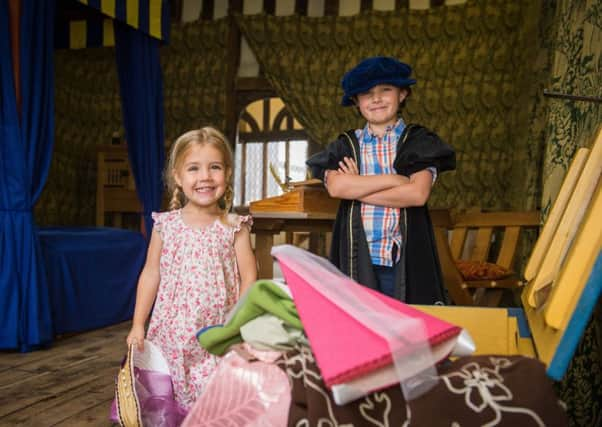Guest Column: Become a king or queen at the Old Hall


For half-term at the Old Hall, we have a King and Queen for the Day event running from Saturday, May 26 to Sunday, June 3.
This event compliment the king and queens costumes that can be seen in the Historic Hall of Fame Exhibition.
Advertisement
Hide AdAdvertisement
Hide AdThis event is a chance for junior visitors to enjoy dressing up and having a photo opportunity to sit on the Great Chair on the Dias at the Top Table.
They will also learn how to greet each other in a courtly manner, and have a chance to make their own crown, all included in normal entry.
I am sure to most, when I said, ‘learn to greet each other in a courtly manner’, an image of a man bowing and flourishing his hat came to mind.
But why do we bow and is that really how it was done?
Bowing shows you have lower status than the other person.
In other words, ‘you are stronger than me. I am weaker. I have lower status than you, I am less than you.’
Advertisement
Hide AdAdvertisement
Hide AdInitially in antiquity, people used to either fully lie down flat on the floor, or kneel on the floor with bowed head to their superiors.
This was often done by slaves when in the presence of their masters, or by servants to their lords.
As time went on, the idea arose that only God should be knelt before on both knees, so the gesture evolved into a one-kneed kneel when done for non-God superiors.
In Tudor times a basic attempt at bowing and curtseying was expected from four or five-year-olds, with more proficient bows and a greater understanding of the degree of courtesy expected from older children.
Advertisement
Hide AdAdvertisement
Hide AdRespect your elders is a term the Tudor stood by and children were expected to show respect to their elders even to those quite significantly below them in the social class.
A young son of a gentleman who failed to doff his cap to a respected village elder and stand aside to let him pass might well get his ear clipped by his father.
The manner of doffing your cap was written down in many 16th century publications across Europe.
The hat was to be removed by its brim with the right hand and lifted from the head as not to ruffle the hair.
Advertisement
Hide AdAdvertisement
Hide AdThe hat was then carried down the front of the body, taking care not to display the inside of the hat to anybody.
Showing the inside of the hat which would contain grease marks and dandruff was seen as most uncouth.
So the vision of an actor waving his hat around would never have been seen.